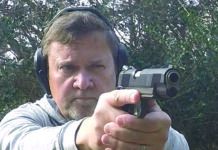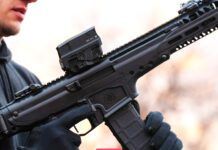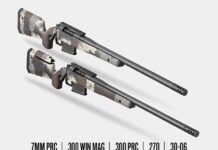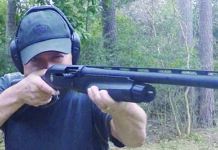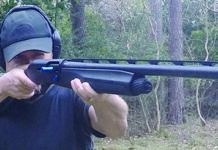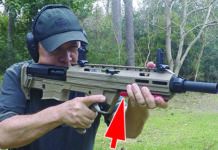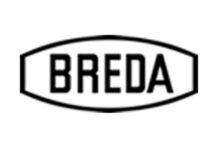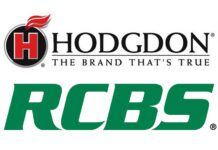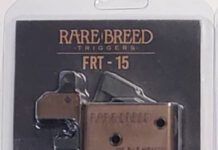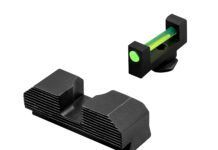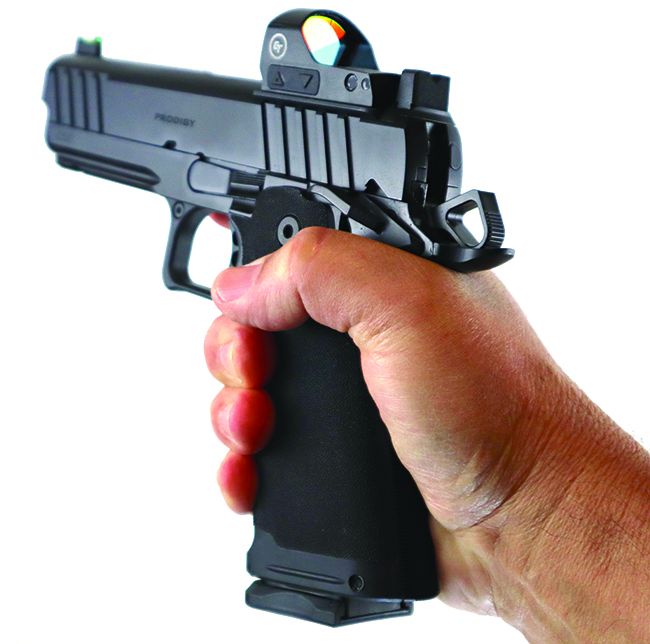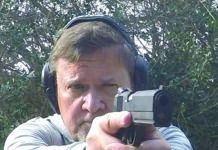Nearly every new 9mm pistol has the slide cut for an optic. While an optic-ready slide is the natural progression for new striker-fire pistols, older platforms are also being adapted to accept a red dot. Take, for instance, the Beretta Model 92 series, a classic double-stack 9mm, which is now available in an optic-ready variant, or the 1911 platform, which is now more frequently being adapted to carry a red dot. Some manufacturers have morphed the platform to accept double-stack magazines, literally doubling the round count in 9mm guns, and called them 2011s. An excellent representation of the diversity in double-stack 9mm pistols that are optic-ready is seen in the Beretta 92X Performance Carry Optic, Springfield Armory Prodigy 4.25, Walther PDP Full Size 4.5, and Glock’s G47 MOS.
We would take any one of these guns in a New York minute, but it would be a tough decision if we had to choose just one. On one hand, there is the simplicity of a striker-fire pistol like the Walther or the Glock, or the crisp 1911-style trigger of the Springfield, or the versatility of the Beretta’s double-action/single-action trigger. Perhaps a heavier gun to help stifle recoil, or a lighter gun for more comfortable concealed carry is the better option? Those were some of the questions we asked when evaluating these excellent pistols, as well as the usual parameters of performance, reliability, accuracy, and ease of use.
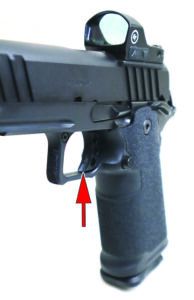
Because these are all optic-ready pistols, we tested four different red dot reflex sights on them. The optics were judged on clarity of the red dot, size of the red dot, brightness adjustment, ease of battery maintenance, ability to co-witness with iron sights, ease of use, and ruggedness. Yes, we dropped expensive pistols with expensive red dots in the dirt so you don’t have to. We also used the red-dot sight as impromptu cocking levers with our hands, on the edge of a shooting bench, and the mouth of a Kydex holster. Front slide serrations are important when a red dot is mounted on these pistols because the optic gets in the way of a traditional pinch-style slide rack where your support hand palms the top of the slide and you pinch the slide between your thumb and index finger to pull back the slide.
The four red-dot sights were an Ameriglo Haven Carry Ready Combo, $329; a Crimson Trace CTS-1250, $230; Steiner’s MPS, $499; and Trijicon’s RMR Type 2, $479. We ranked each pistol on its own merits separate from the red dots. Accordingly, the heights and weights for the handguns don’t reflect the presence of the red dots. But we did pair each gun with a single dot sight for extensive action and accuracy shooting. The red dots offered enough extra precision off the bench that we reported only the accuracy data with each sight aboard. The red-dot grades are listed in the same modules as the pistols they were primarily used on.
How We Tested
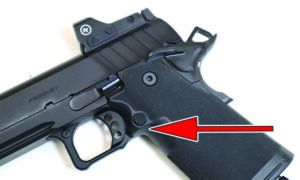
We tested the guns/red dots for speed on plain cardboard IPSC/USPSA targets (78 cents each from shop.actiontarget.com) performing the Failure Drill or Mozambique Drill, depending on how politically correct you are. Red dots make aiming much easier than aligning traditional sights, but finding the red dot can be liability, especially in bright light conditions. All the more reason to install co-witnessed iron sights. For accuracy testing at 25 yards, we used Thompson Targets TAC (Training with Audible Cue) targets ($8 per five-pack from ThompsonTarget.com). These targets can be used with a partner who cues the shooter on what part of the target to fire at. The idea with TAC targets is to train the shooter to process commands and make decisions quickly. Scores can be calculated so you can chart your progress and train smart or have bragging rights for the day.
We used both training ammo and defense ammo, with different bullet weights and types. Training rounds consisted of Winchester Active Duty and Federal American Eagle, both loaded with 115-grain FMJ bullets. Defense loads included Remington HTP with 147-grain JHP bullets and SIG V-Crown with 124-grain JHPs. After tabulating the range data, we discovered the Walther had the highest muzzle velocities and the Beretta the lowest, with an average difference of 58 fps. The Springfield and Glock had muzzle velocities in between the two. We also found more differences. For one thing, the triggers on all four were very different, but one gun stood out as our favorite. Here’s what we thought about each gun in more detail.
Springfield Armory 1911 DS Prodigy 4.25 AOS PH9117AOS 9mm Luger, $1160
Gun Tests grade: A-
Crimson Trace CTS-1250 01-00560, $230
Gun Tests grade: B+
Springfield Armory has a long history of building 1911 pistols, and the DS Prodigy has many 1911 characteristics, such as the 1911 grip angle, thumb safety, grip safety, and sliding trigger. The Prodigy is actually more like a 2011 due to the double-stack magazine it feeds from. The 2011 platform has been around for decades and is mostly used in competition pistols that cost a king’s ransom. The Prodigy brings many competition-gun features to we, the ordinary people, at an affordable price.
| Action Type | Semi-auto, short-recoil-operated |
| Trigger Type | Single action only |
| Overall Length | 7.8 in. |
| Overall Height | 5.5 in. |
| Maximum Width | 1.4 in. |
| Weight Unloaded | 32.5 oz. |
| Weight Loaded | 39.8 oz. |
| Barrel Length/Twist | 4.25 in.; 1:16 |
| Capacity | 17+1, 20+1 |
| Slide | Black Cerakote, steel |
| Slide Retraction Effort | 13.0 lbs. |
| Frame | Black Cerakote, steel |
| Grip Front Strap Height | 3.9 in. |
| Grip Back Strap Height | 3.3 in. |
| Grips | Textured polymer |
| Grip Thickness Maximum | 1.3 in. |
| Grip Circumference Maximum | 5.7 in. |
| Front Sight | Fixed fiber optic |
| Rear Sight | U-shaped notch |
| Trigger Pull Weight | 5.4 lbs. |
| Trigger Span | 2.8 in. |
| Magazines | (2) doublestack, 17- and 20-rnd.; steel w/polymer base pads |
| Safeties | Manual thumb lever, grip |
| Warranty | Limited |
| Telephone | (800) 680-6866 |
| Website | Springfield-Armory.comSpringfield-Armory.com |
| Made In | U.S. |
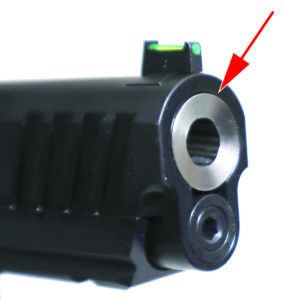
At first glance, the Prodigy looks like a 1911 slide was Frankenstein Monster-ed to a polymer grip, and in a sense, that is how the pistol is constructed. The slide mates to a steel frame, and a polymer grip module attaches to the frame. The polymer grip allows room for the double-stack magazine without having too much girth, while easily doubling the cartridge capacity of a 9mm 1911. In hand, the Prodigy has that familiar 1911 grip, but a fatter feel. It had the largest grip circumference of all the guns tested. The grip has the texture of fine sand paper, offering good grip adhesion without abrading the skin, even after extensive training sessions.
It comes in a cardboard box that includes a soft case and a flush-fit 17-round magazine, an extended 20-round magazine, disassembly hex wrench, and an AOS (Agency Optic System) plate with a Trijicon RMR footprint, which is also the same footprint for many other red-dot sights.
The dome-shaped slide sports tall sights with a green-fiber-optic front sight and deep U-notch rear sight. These sights co-witnessed with the Crimson Trace red dot, which we appreciated. These are excellent iron sights should you want to run the Prodigy with no optic. The fore and aft slide serrations are coarse and well designed for slip-free grasping. The Prodigy uses a flared match-grade stainless bull barrel that mates up with the inside of the slide at the muzzle. There is no GI-style bushing, which means you need to use a hex wrench to remove the recoil assembly from the slide. The two-piece guide rod acts like a full-length rod. The guide rod provides smoother recoil, we thought.
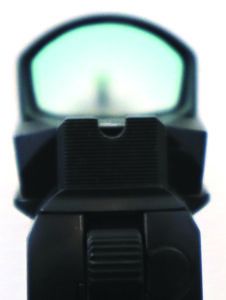
Controls consist of an ambidextrous thumb safety that clicks positively on and off with the thumb of your shooting hand. The slide stop is inset into the thick frame due to the accessory rail. A skeletonized hammer is used for faster lock time and has good ergonomics if you want to decock or cock the hammer. The curved trigger is serrated and has an overtravel adjustment. The speed bump on the grip safety is large enough so that even a sloppy draw and grip will deactivate the safety, and the beavertail offers plenty of hammer-bite protection. The round and serrated magazine-release button extends slightly more so you can lose an empty magazine efficiently.
Both the front and back grip straps have a fine texture that assist with controlling the pistol. It feels good in hand. The trigger guard is undercut for a higher grip and less muzzle flip, and the magazine well is flared so it swallows up the tapered double-stack magazines fast during a reload.
Some 2011 guns are known to be picky about their magazines. DuraMag builds the magazines for Prodigy. The floorplate is polymer, and the magazine body is steel. Something to note is that Prodigy magazines will function in Staccato P guns.
The Crimson Trace CTS-1250 compact reflex sight features a 3.25-moa red aiming dot. Two buttons on the left side of the unit turn on the dot and adjust illumination through a range of 11 brightness settings. The battery compartment is on the top of the sight so there’s no need to remove the sight when changing the battery every few years. After 10 hours of inactivity, the sight will automatically enter sleep mode. Press either button to turn on the sight to the last used brightness level. Adjustments required a small jewelers flat-blade screwdriver if you lose the screwdriver that comes with the sight, which we did. There was a slight amount of flaring of the dot. Because this sight does not have an auto-on feature, it is best used for competition and target shooting. Remembering to turn on the sight in a gun fight is last thing you want to think about. As an option, you can train yourself to activate the on/off button with the thumb of your support hand if you are right-handed. We prefer to have the sight turn on as soon as motion is detected.
The trigger press has some take up, then hits the wall and breaks rather crisply. The 5.4-pound pull weight was okay and allowed us to do good work on the range, but we would have liked it more toward 4 pounds.
The Prodigy was the most accurate pistol in the test, even if we gripe about the trigger-pull weight. We fired our best group using Federal American Eagle training ammo, and it measured 0.7 inches at 25 yards. The SIG V-Crown defense ammo was close behind with a 0.97-inch group. That’s nice shooting. The Remington and Winchester loads had best groups that measured slightly over 1.0 inches. With this kind of accuracy, we shouldn’t complain about the trigger. It also underscores why we shot the guns with the dots. It would have been very difficult to shoot groups this tight with iron sights.
During the speed test, the Prodigy shined. Between the weight, grip, trigger, and red dot, it was fast to shoot and to control for follow-up shots. We were shooting one ragged hole with the Prodigy. Recoil pulse was very manageable, and the slide cycled as smooth as silk. Reloads were slick because the magazine has such a steep taper. It basically transitions from a double stack to a single-stack magazine to feed rounds. The 20-round magazine adds additional capacity in very little extra space.
Our Team Said: The Commander-size Prodigy 4.25 offers all the features you like in a 1911 — grip angle, trigger, manual safeties — plus it increases the ammo payload. There is a lot to like about the Prodigy especially if you are a 1911 fan. It is well suited for self defense or competition and is a bargain compared to other comparable brands. We would use the Crimson Trace red dot on a competition gun, but we would pass on it for defense work because it does not automatically turn on when motion is detected.
9mm Luger Range Data
To collect accuracy data, we fired five-shot groups from a bench using a rest. Distance: 25 yards with the reflex red dot sights. We recorded velocities using a ProChrono digital chronograph set 15 feet from the muzzles.| Federal American Eagle 115-grain FMJ | Beretta 92X | Glock G47 MOS | Springfield Armory Prodigy 4.25 | Walther PDP 4.5 |
| Average Velocity | 1135 fps | 1136 fps | 1140 fps | 1150 fps |
| Muzzle Energy | 329 ft.-lbs. | 330 ft.-lbs. | 332 ft.-lbs. | 338 ft.-lbs. |
| Smallest Group | 1.48 in. | 1.68 in. | 0.70 in. | 1.76 in. |
| Average Group | 1.59 in. | 1.88 in. | 1.02 in. | 1.98 in. |
| Winchester Active Duty 115-grain Ball | Beretta 92X | Glock G47 MOS | Springfield Armory Prodigy 4.25 | Walther PDP 4.5 |
| Average Velocity | 1220 fps | 1257 fps | 1229 fps | 1289 fps |
| Muzzle Energy | 380 ft.-lbs. | 404 ft.-lbs. | 386 ft.-lbs. | 424 ft.-lbs. |
| Smallest Group | 1.40 in. | 1.49 in. | 1.02 in. | 1.39 in. |
| Average Group | 1.44 in. | 1.54 in. | 1.06 in. | 1.45 in. |
| SIG V-Crown 124-grain JHP | Beretta 92X | Glock G47 MOS | Springfield Armory Prodigy 4.25 | Walther PDP 4.5 |
| Average Velocity | 1023 fps | 1051 fps | 1031 fps | 1116 fps |
| Muzzle Energy | 288 ft.-lbs. | 304 ft.-lbs. | 293 ft.-lbs. | 343 ft.-lbs. |
| Smallest Group | 2.10 in. | 2.04 in. | 0.97 in. | 1.56 in. |
| Average Group | 2.30 in. | 2.72 in. | 1.20 in. | 1.78 in. |
| Remington HTP 147-grain JHP | Beretta 92X | Glock G47 MOS | Springfield Armory Prodigy 4.25 | Walther PDP 4.5 |
| Average Velocity | 921 fps | 920 fps | 925 fps | 976 fps |
| Muzzle Energy | 277 ft.-lbs. | 276 ft.-lbs. | 279 ft.-lbs. | 311 ft.-lbs. |
| Smallest Group | 1.94 in. | 2.09 in. | 1.10 in. | 1.12 in. |
| Average Group | 1.97 in. | 2.38 in. | 1.27 in. | 1.26 in. |





